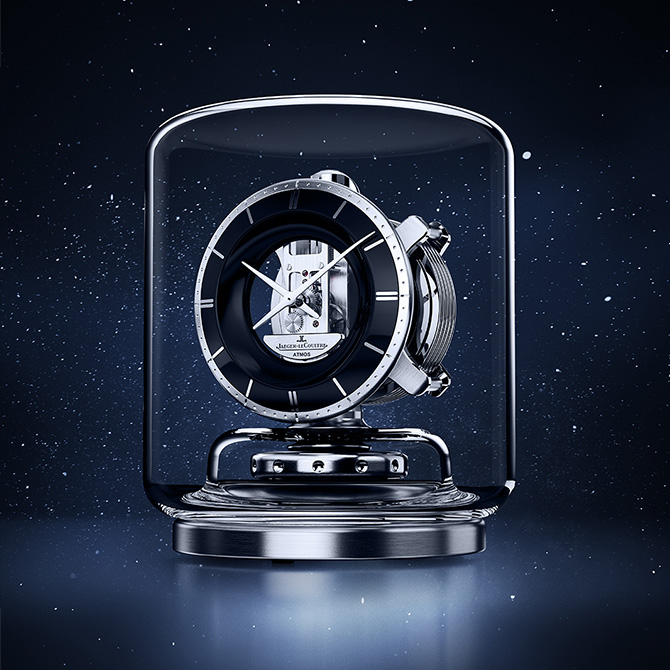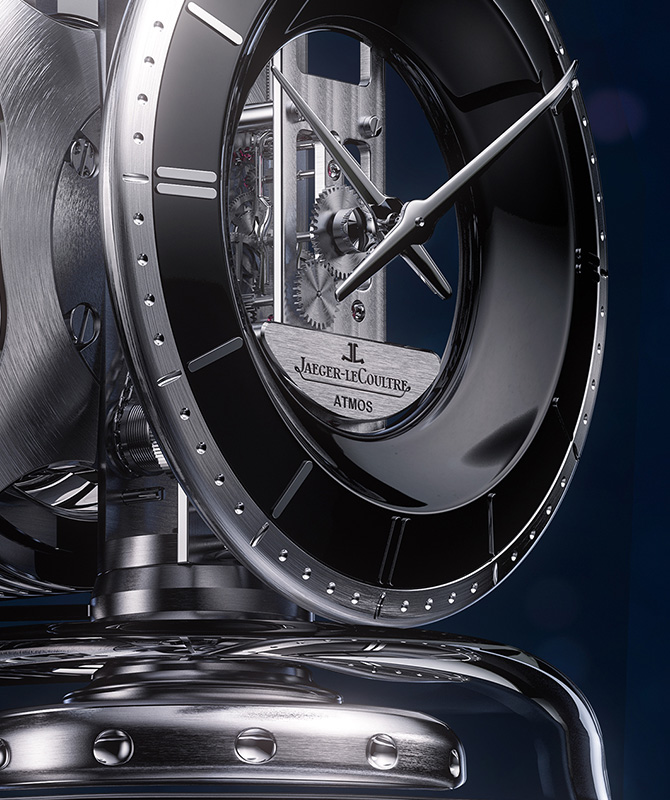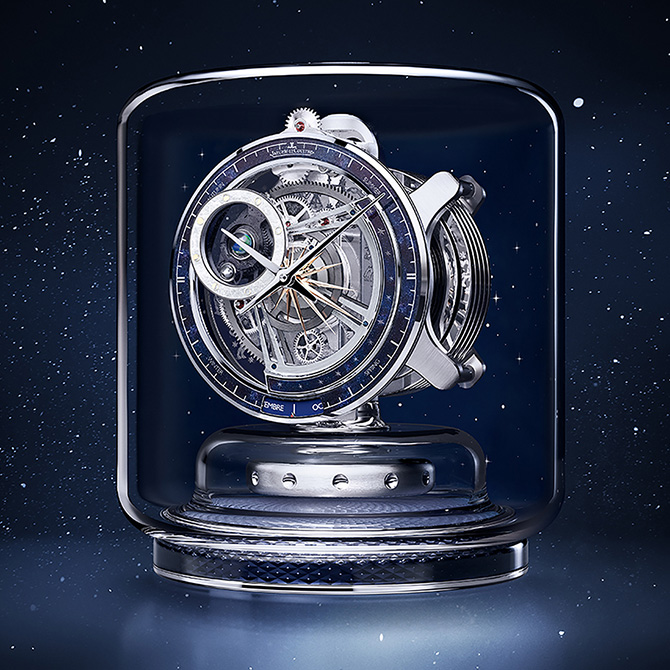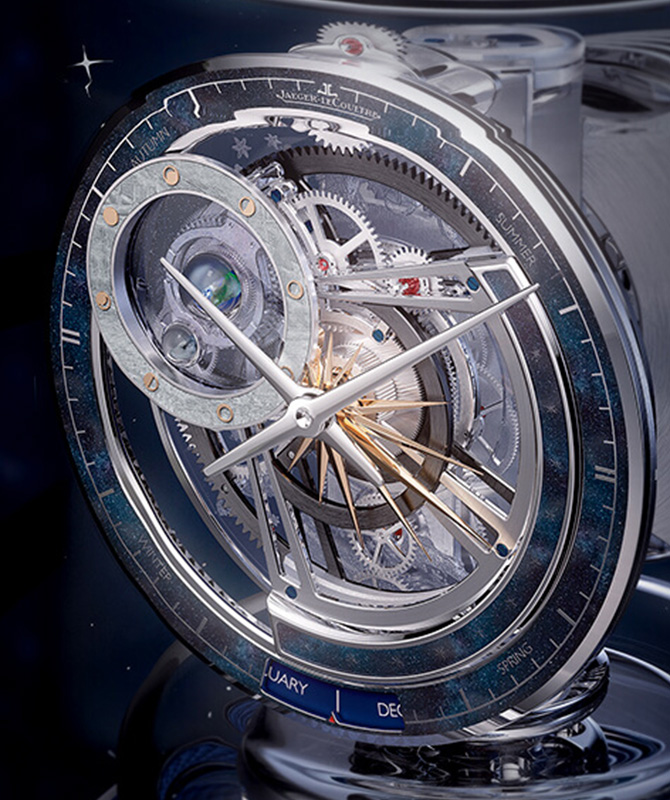A clock powered by the very air we breathe? Enter Jaeger-LeCoultre’s Atmos clock
Objet d'art

Jaeger-LeCoultre has many outstanding timepieces, but one of the Maison’s most unique inventions that shine on its own is the Atmos clock. For the unfamiliar eye, one might see it as an art piece in the form of a glass dome following an Art Deco design. However, look closer, and you’ll find the intricate complication, pointing to the minute and hour of the day. But the mechanism that allows this movement, hangs afloat, which beckons the question of “how”.
The answer is simple: It’s the air around us. The Atmos seemingly defies the laws of physics, and its origin story began in 1928. It is known for living off air, breathing like we do, and with that, the Atmos can run for centuries without needing any external energy source or rewinding. To illustrate, the new Atmos Hybris Mechanica Calibre 590 would not need adjusting until 2412. The secret is in the air temperature—a variation of just 1°C is enough to power the clock for two days—whereby the change would inadvertently affect the volume of the gas in a hermetically sealed capsule that is connected to the clock’s drive spring with a membrane. In short, when the temperature changes, so do the volume, causing the membrane to ‘breathe’ and move like an accordion, thus, winding the spring. Imagine: 60 million Atmos clocks would require the same amount of energy as a single 15-watt incandescent light bulb.

At the same time, it made its name too as a prized objet d’art with a worthy design and aesthetic. That much has been accomplished at birth, and since then, the Manufacture has continued to make technical improvements to push the limits of the unthinkable. Making its debut at Watches and Wonders 2022, Jaeger-LeCoultre offers two new beautiful editions: the Atmos Infinite and Atmos Hybris Mechanica Calibre 590.
To begin, the Atmos Infinite marks a new chapter with a new design that reinterprets the unique horology piece for the 21st century as a contemporary work of art, highlighting transparency and minimalism, purity and modernism. Just like how the invention is law-defying, the Atmos gives the illusion of the mechanism floating within a glass cube. Held in place by glass supports that look virtually invisible, it provides an unrestricted view of the entire mechanism—the bellows, the synergised movement of the chains and gears to keep the clock running.
“The aesthetic of the Atmos is defined by the distinctive shape of its movement. With its complete absence of visual distraction, the seamless glass cabinet gives full value to the Atmos mechanism, which appears to float freely within it,” explains Lionel Favre, Jaeger-LeCoultre Design Director.

With the perpetual Jaeger-LeCoultre Calibre 570, the Atmos Infinite’s functions are limited to hours and minutes, but so, the construction of the clock is pared back with fine watchmaking finishes, ranging from brushed surfaces to polished edges and Côtes de Genève stripes.
The more extravagant of the two, the Atmos Hybris Mechanica Calibre 590, is a beauty of its own standards. Not only is it the most complex Atmos clock ever created—it displays the hours, minutes, night and day, month, moon phases and zodiacal calendar—but its celestial-inspired aesthetic will take your breath away. A sublime objet d’art.

Affectionally also known as the Atmos Tellurium, it took more than four years worth of research and development work to achieve a complication that reproduces the true cycles of the Earth, Sun and Moon. What makes it different dates back to 1543. Astronomer Copernicus published his heliocentric model, placing the Sun as the centre of our solar system instead of the traditional choice that is Earth. This led to the invention of the tellurion (sometimes known as tellurium), and from the 18th century onwards, elaborate clocks were sometimes surmounted by these extraordinary mechanisms. ‘Tellurium’, Calibre 590’s nickname, is thus, a tribute to those fascinating clocks.
So precious is the Atmos and the Manufacture’s dedication to continuously push the mechanism by adding new functions without affecting the energy consumption that there is an Atmos atelier. There is where the new Calibre 590 was conceived, designed and constructed—with all of its 443 components. In addition, the precision of the mechanism has been elevated even more, with the improved accuracy equating to only one day of error in 5,770 years. In terms of design, the Atmos Hybris Mechanica Calibre 590 is distinguishable by its cylindrical glass cabinet, delicately handpainted with constellations. Decorative finishes complement the dome such as a miniature painting to add detail and depth to the spherical Earth; laser engraving to mimic the Moon’s surface; and in-laid meteorite on the Earth-Moon ring.

Jaeger-LeCoultre’s Atmos clocks are truly unlike any—and they’ll outlive us all.
Pricing details
Atmos Tellurium: EUR500,000 (limited edition of 10 pieces)
Discover the Atmos clocks further via Jaeger-LeCoultre’s website.
| SHARE THE STORY | |
| Explore More |



